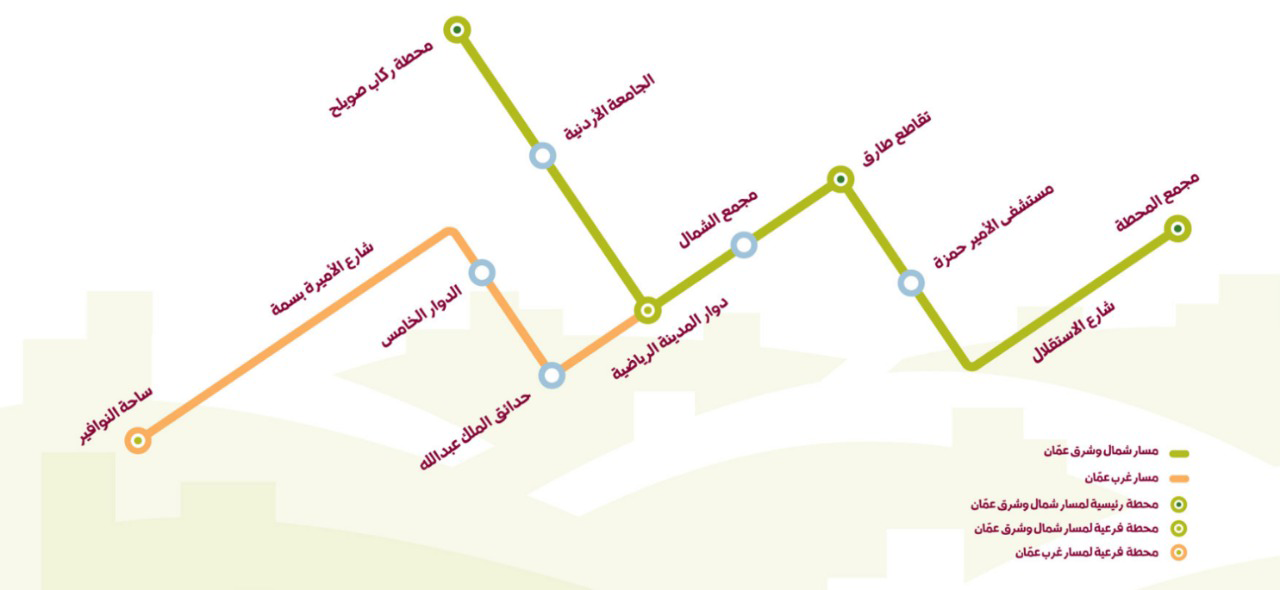
Vision
The Greater Amman Municipality (GAM) has initiated the development of an integrated and modern transportation/traffic network to meet the needs of Amman's residents and its visitors. The network had to be customized for the unique economic, social, and topographic nature of the city. The new network, with the BRT as a crucial component, will not only ensure the sustainability of the city, but also its growth and prosperity, and it can very well fulfill the vision of an organized, modern and viable city.
The Bus Rapid Transit (BRT) Project
an introduction
At the heart of our vision of a rapid transportation network for the city of Amman, a flexible and fully-integrated public transportation system that provides rapid, safe, and highly reliable service shall soon exist. The concept revolves around large-capacity buses that operate on dedicated tracks to provide a high level of serviceability. The buses shall travel at intervals of no longer than 3 minutes to and from modern fully-integrated terminals.
Amman’s BRT will be the centerpiece of a fully-integrated and hierarchical public transport network. For instance, a citizen requiring traveling from her/his place of residence to the workplace may require more than one intermediary (means) of transportation. In addition to designing a fast bus system, the need for a wider network of other specific intermediaries such as regular buses or smaller vehicles is needed to complete the network. This auxiliary network aims to get passengers to the nearest fast bus station in the fastest time possible, which will reduce the waiting time and provide a seamlessly smooth and convenient service.
International Studies
Did you know
· The rapid bus system will provide 85 million kilometers of distances traveled by private vehicles and 12 million kilometers of distances traveled by taxi, which will reduce traffic congestion.
· Each bus of the rapid bus system can accommodate about 150 passengers, or the equivalent of 110 private vehicles, considering 1.4 people per vehicle, which is the current average in Amman.
· The waiting period between one bus and another in the express bus system will not exceed 90 seconds during peak times.
· 4,000 indigenous trees (requiring less watering and care than imported trees) will be planted on the central islands that separate the express bus lanes from the vehicle lanes on the first axis (Sweileh - Al Mahatta).
· The mechanism of access to the rapid bus system stations will be through bridges, tunnels, or pedestrian walkways controlled by traffic lights.
where do you want to go?

1. The rapid bus network within the city of Amman consists of two main lines with a length of 32 km.
2. The Greater Amman Municipality launched the trial operation of Line No.2, with a length of 17 km, starting from Sweileh and reaching the Jordan Museum, mid-2021.
3. The Greater Amman Municipality launched the trial operation of Line No. 1, with a length of 15 km, starting from the Al Mahata Terminal and arriving at Sweileh Terminal, in the first quarter of 2022.
.4. There are currently 96 buses operating on the line with a frequency of 5 minutes, with the possibility of increasing the frequency during peak hours.
5. There are many substations along the line, serving the city's attractions.
6. All buses are of high specifications and adapted for use by people with special needs.
7. Current operating hours (trial run):
Saturday - Thursday 6 am to 10 pm
Friday 8 am to 9 pm

